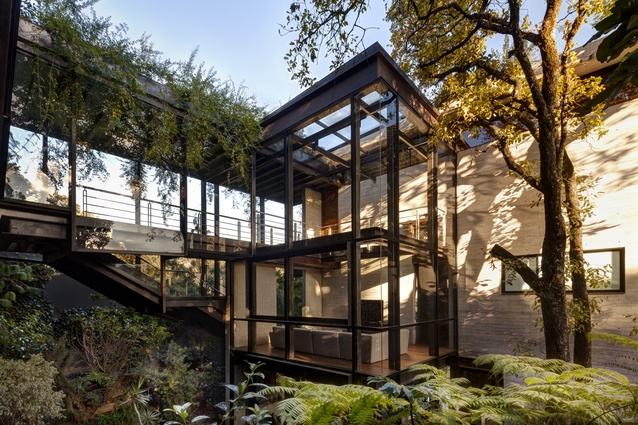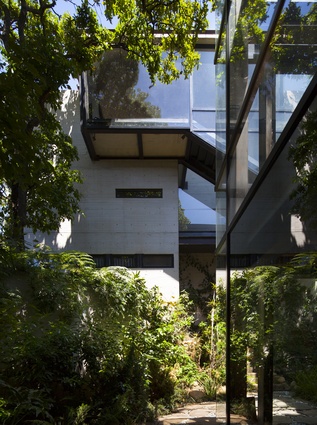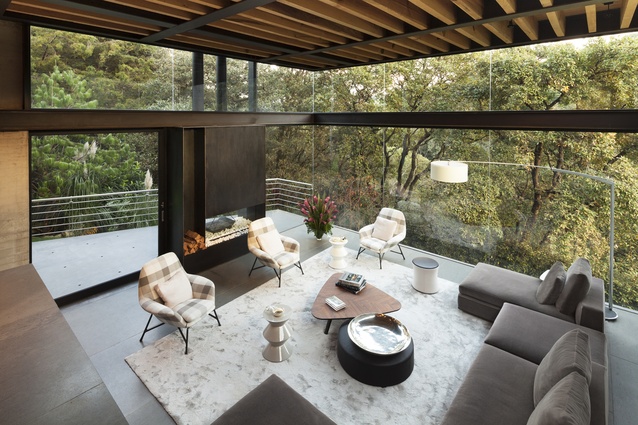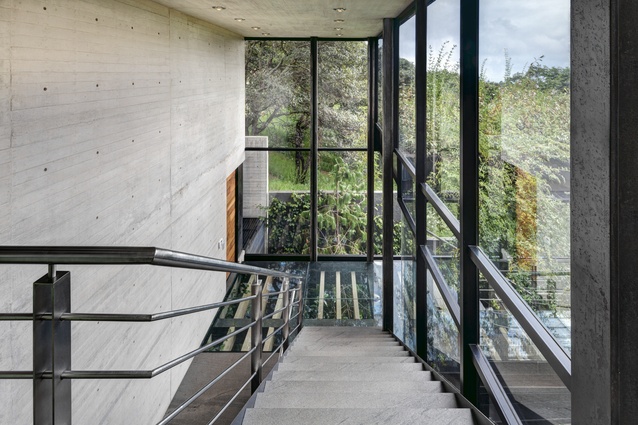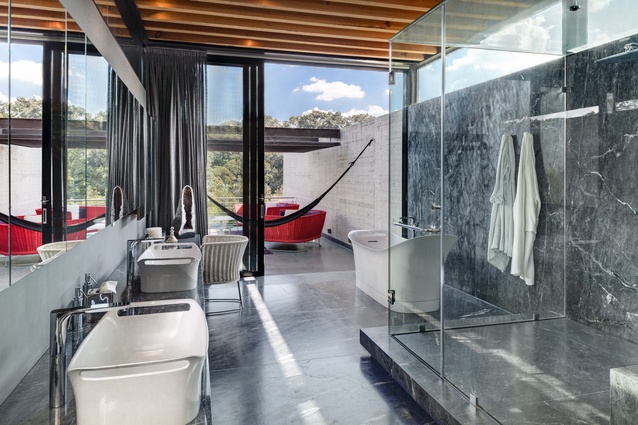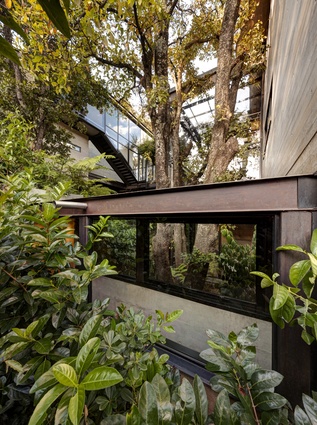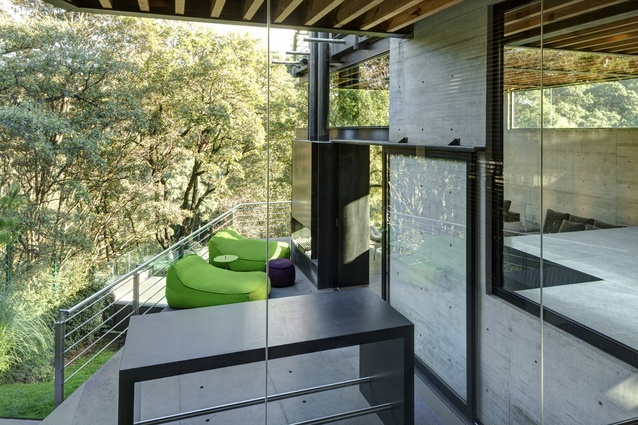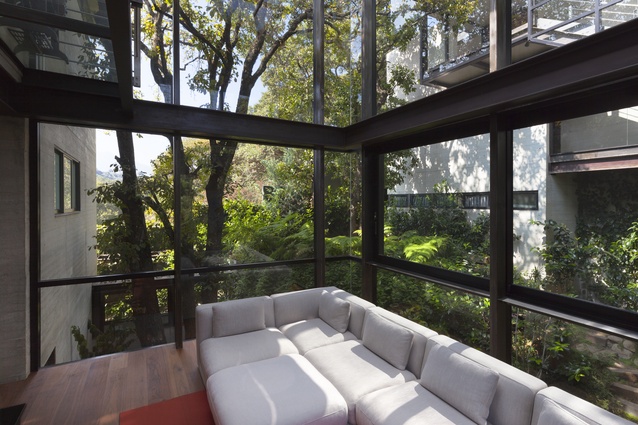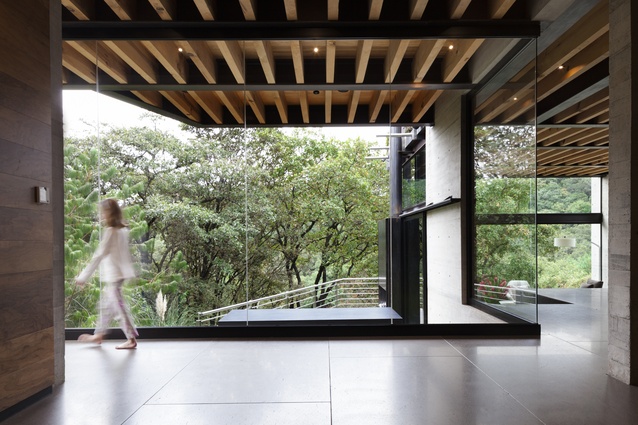Aztec jungle
In the hills of Mexico City, this home in the suburb of Tepozcuautla is affectionately known as the ‘House in the Forest’. Its two distinct, concrete volumes – connected by glass-floored, steel bridges – open out to terraces and vertical gardens to the south and east, capturing the maximum amount of natural light and exceptional views.
Like the bridges connecting the two buildings, the principal staircase is glass-floored and cantilevered above the forest canopy. Climbing the stairs or crossing the bridges gives the residents and their visitors the illusion of walking among treetops, of touching nature.
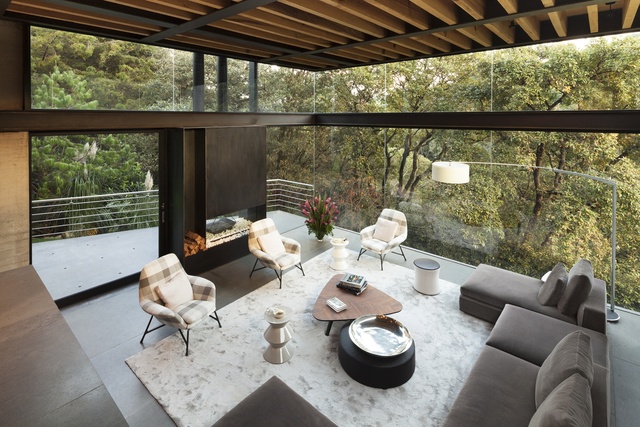
The design is a direct response to the site, says project architect Daniel Álvarez of Grupo Arquitectura, which is based in Mexico City. “The site should be the first thing any architect looks at when starting a design,” he says. “It tells you what it wants to be built above it. And to understand the environment, you need to analyse its particularities, such as views, sunlight, orientation, topography and landscape.”
Familiar with Grupo Arquitectura’s local and international projects, the clients gave Álvarez and his team the freedom to design an ambitious home and to “respect the natural topography, not touch the trees, and place the structures in the best possible way for views and orientation”, says Álvarez.
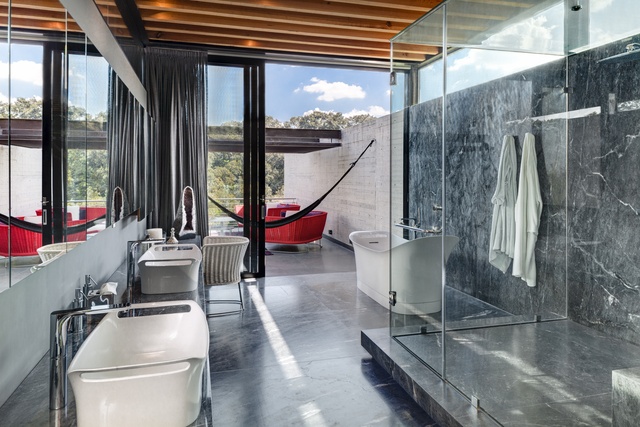
Nestled into a sloping site, the home’s structure comprises a robust system of concrete, steel and timber, all of which remains unrendered and exposed, emphasising elements in their natural state. The home has two geometric volumes, one containing the primary public spaces and living areas, the other housing the functional amenities as well as an outdoor Jacuzzi, a pool and garden. The expansive rooms are largely free from the visual interruption of internal beams and supports and, with full-height glazing, the connection with nature is immediate and real. With an abundance of views to play with, the architects have been restrained, contained and focussed in some rooms, while other areas are treated to nature in full-scale.
The orientation of high-performance, energy-efficient Low-E windows throughout the home was carefully considered to maximise the range of vistas and manage ambient temperatures in each space. Planters sit at the rooftop edges, spilling jasmine like wild, verdant fringes onto the façade. The foliage acts as a light solar curtain on the windows it adorns. Inside, the temperature remains consistently comfortable without the need for air-conditioning. In keeping with its respectful treatment of the site and nurturing sustainability, a water recycling system makes wastewater suitable for garden irrigation. But House in the Forest’s sustainable features do not come at the cost of convenience or luxury, and all the electrical systems are fully automated.
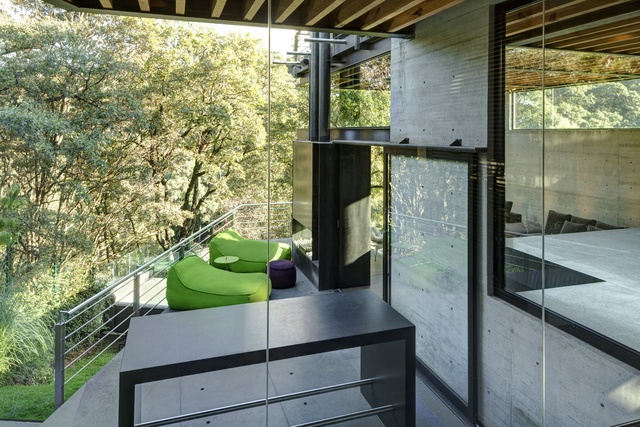
Honouring the strong physical and visual relationship with nature, the owners have furnished their home with a refined and elegant hand. With the possible exception of a couple of tomato-red outdoor pieces and the high-spec German kitchen, designs by Minotti, Paola Lenti, Rimadesio and Bulthaup don’t detract from the exceptional site.
The project’s success is confirmed by extremely happy clients, says Álvarez, and the feeling that the home engenders. “We can say that it is one of the very few projects we have developed where absolutely nothing changed from the first draft to the delivery of the house.”

